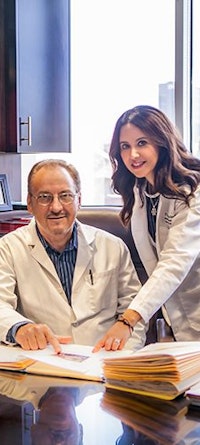Everything you need to know about egg freezing part II: How is egg freezing accomplished?

For modern women, egg freezing (also known as oocyte cryopreservation) represents the greatest advance in control of reproductive function since the advent of the birth control pill. Similar to birth control, freezing eggs allows women to choose when they are ready to become pregnant. Unlike birth control however, egg freezing actually increases the chance for conception later in life.
To understand how egg freezing works, it is important to know a little bit about normal ovarian physiology. At the beginning of each menstrual cycle, a group of 4-15 immature eggs become available for potential ovulation. Over the subsequent two weeks, the brain releases special hormones in a specific pattern so that one egg grows faster than the others. This egg becomes “dominate”, eventually ovulates and may go on to become a baby!. The remaining eggs degenerate and are lost forever. Each month a new group of eggs become available with one selected. The process continues every month until the supply of eggs is exhausted (menopause).
During an egg freezing cycle, a variety of medications alter this normal process. First, a specific medication prevents the brain from communicating with the ovary, thus preventing the development of a “dominant” egg. Next, two other medications stimulate the growth of all available eggs. After roughly 10 days of treatment, monitoring and blood work, the eggs reach maturity and can be extracted from the ovaries.
The extraction procedure is called a “follicle aspiration” or “egg retrieval” and it involves the following:
1. Once the eggs are determined to be ready, the patient is instructed to administer a special “trigger shot” that induces final maturation and eventual ovulation of the eggs. The trigger shot is given 36 hours prior to the egg retrieval (for example: 8pm Wednesday trigger for 8AM Friday retrieval)
2. At the retrieval, the patient puts on a procedure gown, receives an I.V. with light anesthesia to alleviate discomfort and prevent movement during the procedure.
3. Using a transvaginal ultrasound probe for guidance equipped with a specially equipped needle guide, a needle is inserted through the vaginal wall and into the ovary.
4. Based on the ultrasonic view, the needle is directed towards each available egg.
5. Once in position, a gentle suction is applied through the needle to aspirate the egg out of the ovary and into a sterile container.
6. Through an inverted microscope, the egg is identified and placed into a special liquid media to prepare it for freezing.
7. Once all the eggs are removed and prepared, they are individually, or in small groups, placed into specially designed glass vials for freezing.
8. Using a precise protocol, the vials are immersed in liquid nitrogen resulting in instantaneous freezing (vitrification).
9. The vials remain in liquid nitrogen until they are thawed.
10. Following the procedure, which usually takes 10-20 minutes, the patient is awaken and taken to the recovery room for about an hour.
11. Some patients feel mild bloating and cramping for the remainder of the day, but usually recover completely by the next day.
12. Most people get their period 2 weeks after the procedure.
As far as the logistics of the process, from the first day of medication until the day of egg retrieval usually takes between 11 to 21 days (depending on age, ovarian response and type of stimulation protocol). During that time, most people have a total of 6 to 8 doctor visits for ultrasound and blood work. The medicine used is in the form of sub cutaneous injections which are self-administered each evening by the patient. Although some people are afraid to give themselves injections, with proper instructions and preparation, anyone can do it.
If you have any questions about egg freezing, feel free to contact us, we would be happy to talk to you.







